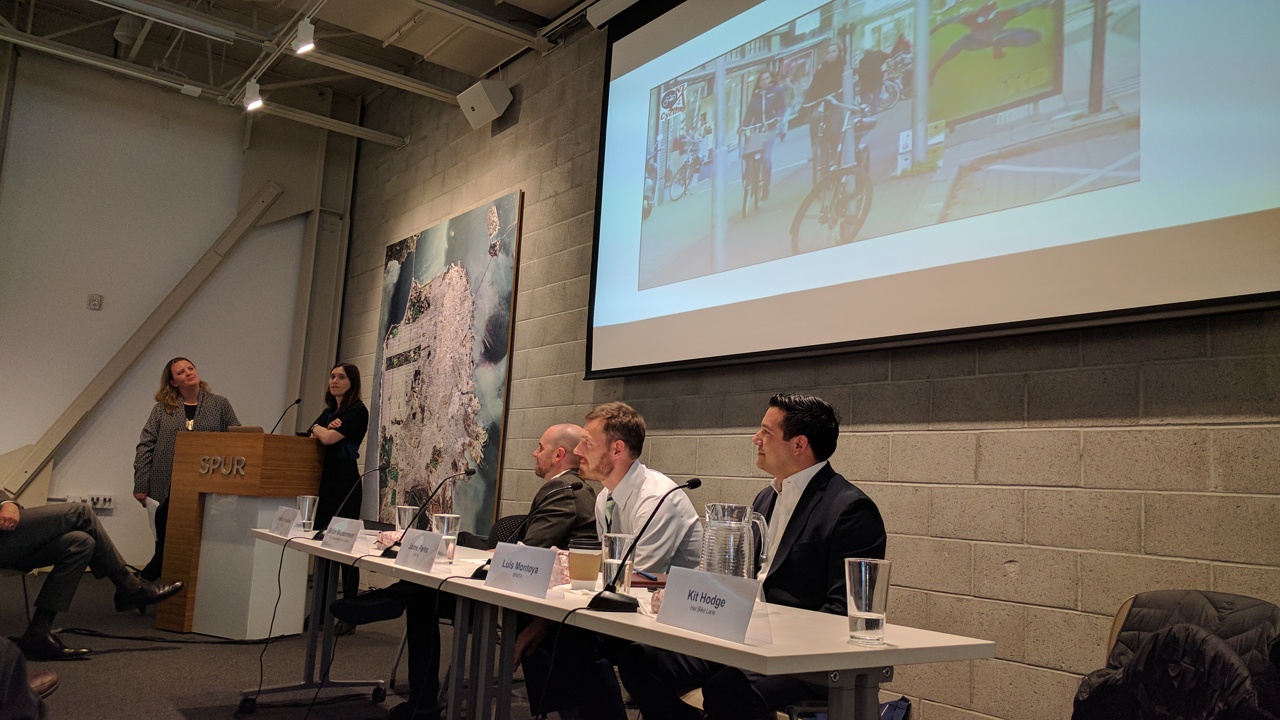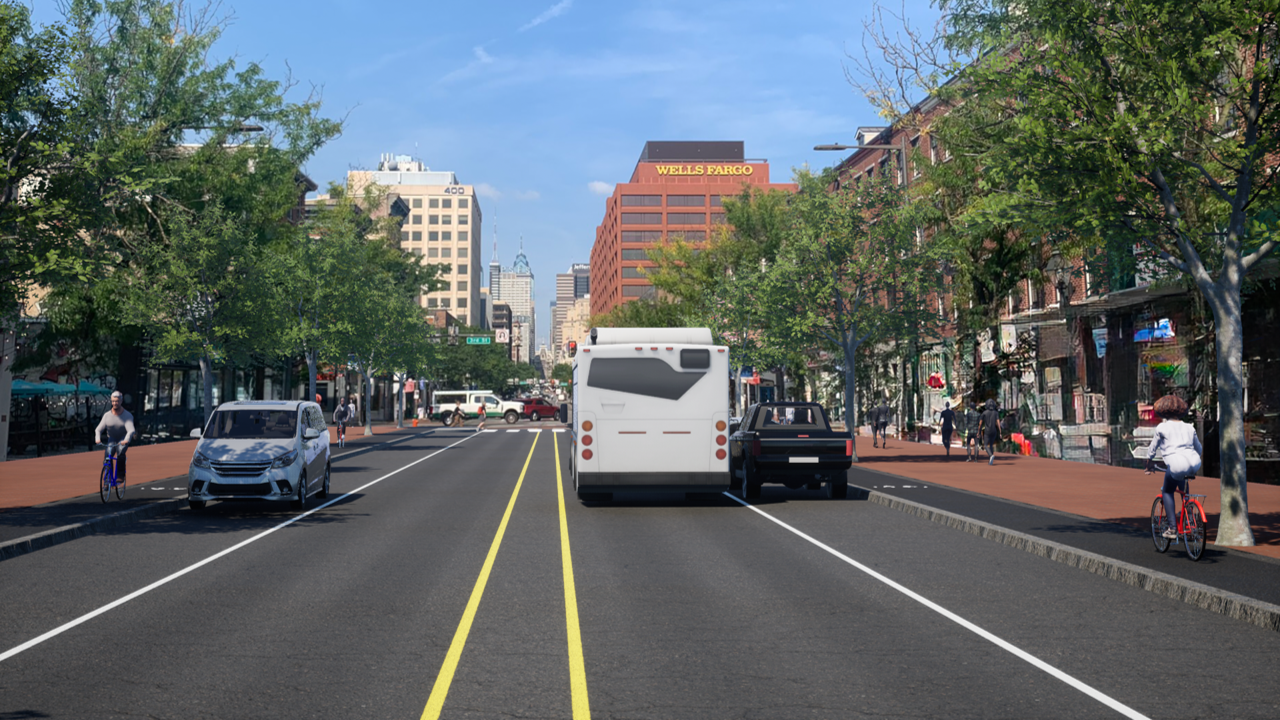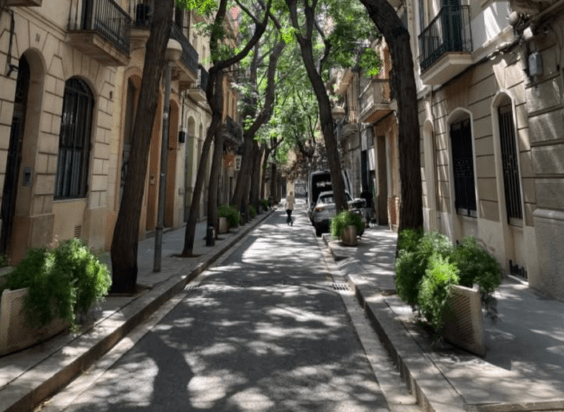San Francisco has made strides in increasing bicycling's mode share, but its bike infrastructure is still bad. That was the conclusion of yesterday's state of cycling talk at the San Francisco Bay Area Planning and Urban Research Association. "I had three or four near misses on Market street just getting over here," said Brian Wiedenmeier, executive director of the San Francisco Bicycle Coalition. "So from our perspective it’s pretty crappy."
He said that the key to getting better, safer infrastructure for bikes is to rely on data when making decisions about lane and intersection construction. "When we talk about biking, too often in the debates about whether to build the bike lane, anecdote rules," he said. "There’s always the one person who says: 'there’s this time a cyclist almost ran me over on the sidewalk.' It colors people’s views on biking."
One of the first data points he talked about was the increase in cycling over the past ten years. "There's been a 184 percent increase since 2006. A remarkable amount of growth," he said. Still, growth is one thing--mode share paints a different picture, with cycling accounting for only 4.3 percent.
And while that's not bad for an American city, keep in mind cities in the Netherlands or Denmark boast a one-third share. Clearly, the numbers show they're doing something right and San Francisco is doing something wrong. And it's not that those countries have a more bikey culture. "53 percent of San Franciscans report biking at least occasionally and 83 percent think biking is good for San Francisco. That popularity is approaching the levels of mom, apple pie and Superman."
So biking is hugely popular--but that popularity doesn't get reflected in mode share, Wiedenmeier said. What's behind the discrepancy? He pointed to a variety of factors, most well-known to Streetsblog readers, such as the proliferation of Uber and Lyft blocking bike lanes. But the overarching reason is the lack of protected bike lanes and intersections. The numbers from a poll he presented were stark: 68 percent believe the city is not doing enough to support biking. 56 percent want to see spending dramatically increased on biking. Perhaps most telling, 65 percent were likely to ride on physically protected bike lanes. But they don't ride, because protected bike lanes barely exist in the city.
Protected bike lanes and intersections were a big focus of the presentation from Kit Hodge of "Her Bike Lane," which advocates to make cycling more inviting specifically for women. She explained that her group, which was formed last Fall, wanted to build on the Bicycle Coalition's work by focusing on advocacy with a different approach. So instead of advocating for bicycling first, "We want to start with people, specifically women, and the role of our bodies in public space."
Why is this important and different for cycling advocacy? She cited a disturbing phenomenon in London. "Almost a decade ago, a whole slew of women were killed by trucks in London...in a short period," she explained. Transport for London discovered the reason. Cyclists are required to stop behind the crosswalk or stop line in London (and in California as well). Male cyclists, realizing the inherent danger of staying in the blind spot of a truck that might be preparing to turn, disobeyed the law and squeezed past, to make themselves more visible to the truck driver by waiting somewhere in front of the stop line. Women tended to follow the law--and then got "right hooked" by the trucks (or "left hooked" in the UK). "That's an example of not thinking about behavior and preferences" between men and women, said Hodge.
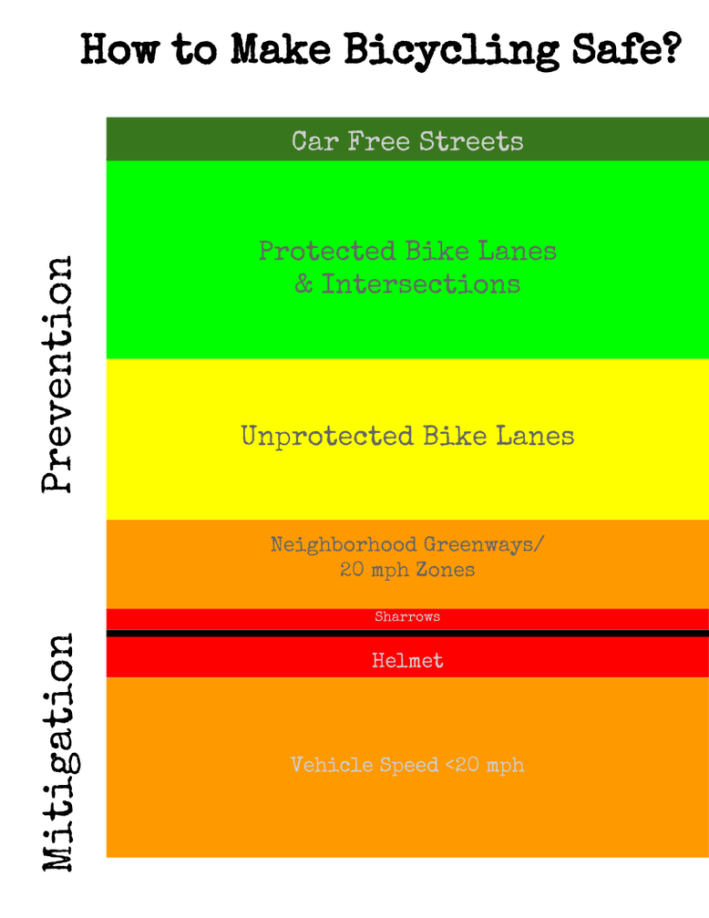
Acknowledging different preferences between men and women is key to encouraging a diverse cycling population and saving lives, she said. The current split of male versus female riders in San Francisco is still heavily biased, at 73 percent male and 27 female. "The number of women has numerically increased, you are seeing more women, but we are still a minority of riders."
What's the solution to getting parity? She said if one looks at the Netherlands and Denmark, there are actually slightly more women who cycle than men. She argues that the reason is that men and women cyclists both want protected bike lanes and intersections, but that women need them even more. "Studies have shown that women have a higher level of concern about safety, not just for biking," she said. This was reflected in the bicycle counts on Fell and Oak. When lanes were initially installed, with just plastic bollards, more people cycled, but the increase of male cyclists was much stronger. When concrete curbs were put in for protection--in other words, real protection that actually has a chance of deflecting a car that's starting to swerve into the lane--it finally moved the needle more towards parity between men and women riding on Fell and Oak. "Women require a higher threshold of infrastructure," she reiterated.
She also reinforced a point Streetsblog has made many times--that mixing-zone intersections, where bikes going straight and right turning cars have to cross each other's paths, don't work. "Mixing zones are horrible for most people, and for women particularly," she said, adding that San Francisco needs protected intersections. "If you don’t get them right, no matter what else you get right, you won’t see the needle move...we have a huge opportunity to embrace SF values of gender inclusion and equity and to create parity in our bike network so they work for everyone."
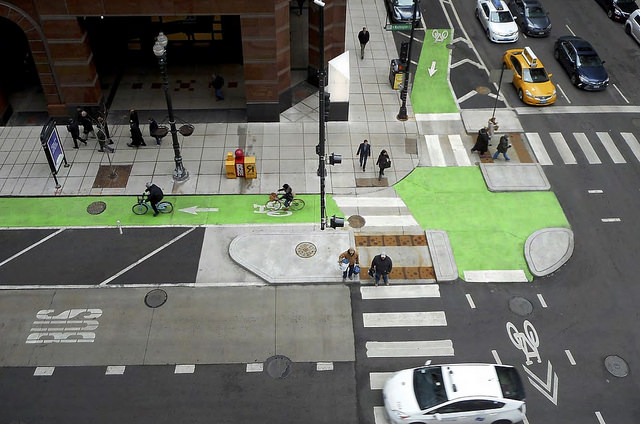
With Wiedenmeier and Hodge's presentations taking up most of the hour, the two from SFMTA were brief. "As Brian stated we have made a commitment to ending traffic deaths on SF streets by 2024, but unfortunately we still have some 30 people dying every year on our streets, and that really hasn’t changed since 2014," said Luis Montoya, SFMTA's Planner for Livable Streets. "The bike plan, adopted in 2009, identified 60 projects for bicycle projects and we achieved over 90 percent of them," said Jamie Parks, also with SFMTA. But even he admitted most of the projects were less than ideal. " If all of them were as good as the Polk contra-flow lane we’d be having a different conversation, but too many are a narrow strips of asphalt." As Parks admitted, it's little consolation to a cyclist, who is riding in precarious striped door lane, to hear that it's "better than nothing." Same goes for sharrows, which were derided at the meeting.
An audience member asked what can be done about Lyft and Uber blocking those "better than nothing" bike lanes. Montoya said they are working on building more loading zones. Another audience member asked about the guerrilla bike lanes recently added on Turk. "We can’t let those stay on the streets, we have engineering standards," said Parks.
In Streetsblog's view, the fact that SFMTA's priority is removing a guerrilla project--instead of bolstering it or replacing it with something better--reflects a deeper issue, and one which Wiedenmeier brought up: "If we want to see better bicycling in San Francisco, we need strong leadership. That starts with the mayor and our board of supervisors."
Streetsblog readers will recall that it took the deaths of two cyclists, one horrible evening last June, to finally get the mayor to issue an executive order on safety. "When we get a project fast-tracked, it only happens because somebody died," said Wiedenmeier. He's right--that's a sign of weak leadership from City Hall. Until San Francisco gets a leadership team like New York's Mayor Michael Bloomberg, and NY-DOT head Janette Sadik-Khan, San Francisco will not get the urgent, transformative change that it desperately needs. But forget about New York or Chicago or Portland--San Francisco should strive for mode share on par with the Netherlands and Denmark, complete with parity in the bicycle community by gender and race.
In fact, Hodge concluded her presentation with a video of women cycling in the Netherlands. Is this what San Francisco can look like in the future? Absolutely, but only with continued advocacy and the right leadership driving change.
For more events like these, visit SPUR’s events page.
